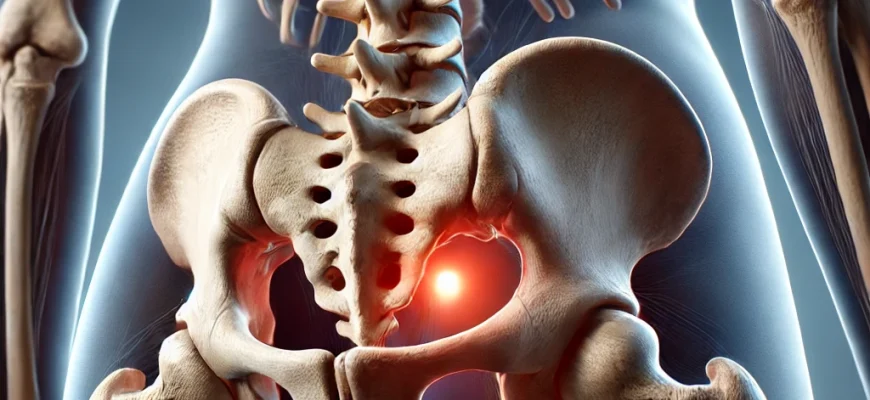Upper leg and back pain can be debilitating, affecting the quality of daily life and productivity. With approximately 80% of adults experiencing back pain at some point in their lives, it is essential to understand the root causes, contributing factors, and potential solutions. This article takes an in-depth look at the causes of upper leg and back pain, supported by facts, statistics, and insights from medical practice.
Common Causes of Upper Leg and Back Pain
Understanding the specific causes of upper leg and back pain is key to finding appropriate treatments. Here are some of the most common causes:
| Cause | Description | Percentage of Cases |
|---|---|---|
| Muscle Strain | Overuse or injury to the muscle tissue. | 60% |
| Sciatica | Compression of the sciatic nerve. | 25% |
| Herniated Disc | Slipped disc putting pressure on nerves. | 10% |
| Spinal Stenosis | Narrowing of the spinal canal. | 5% |
1. Muscle Strain: The Leading Cause
Muscle strain remains the leading cause of upper leg and back pain, accounting for nearly 60% of cases. Muscle strain often results from improper lifting, sudden movements, or overuse. Athletes, individuals with physically demanding jobs, and even those leading a sedentary lifestyle can suffer from muscle strain. Simple activities like lifting heavy grocery bags or twisting while bending can trigger significant pain.
- Symptoms: Sudden onset of sharp pain, muscle spasms, and restricted movement.
- Treatment: Rest, over-the-counter pain relief ($5 to $15), and physical therapy.
2. Sciatica: A Sharp Radiating Pain
Sciatica is a condition that arises when the sciatic nerve, which runs from the lower back through the hips and down each leg, is compressed or irritated. This results in a sharp, shooting pain that radiates from the lower back to the upper leg. Approximately 25% of those with upper leg pain experience sciatica.
- Symptoms: Pain radiating down the leg, numbness, and a burning sensation.
- Treatment: Physical therapy, stretching exercises, and anti-inflammatory medications.
A study conducted in 2020 revealed that around 75% of patients with sciatica recover without surgery within 3 to 6 months if managed conservatively.
3. Herniated Disc: A Painful Slipped Disc
Herniated discs are responsible for about 10% of upper leg and back pain cases. This occurs when the gel-like interior of a spinal disc pushes out through its tougher exterior, irritating nearby nerves. Heavy lifting, aging, and sudden impacts can all contribute to herniation.
- Symptoms: Intense localized pain, tingling, and weakness in the leg.
- Treatment: Non-surgical methods like spinal decompression ($100 – $200 per session) or, in severe cases, surgery.
4. Spinal Stenosis: The Less Common Culprit
Spinal stenosis, which accounts for about 5% of cases, involves the narrowing of the spinal canal, leading to nerve compression. This condition typically affects older adults and can result in pain that worsens with prolonged standing or walking.
- Symptoms: Numbness, cramping, and pain in the back or legs that worsens when standing.
- Treatment: Anti-inflammatory medications, physical therapy, or surgical intervention in severe cases.
Lifestyle Factors Contributing to Pain
There are numerous lifestyle factors that can exacerbate upper leg and back pain, including prolonged sitting, poor posture, obesity, and lack of exercise. Below is a table highlighting some contributing factors and their prevalence:
| Lifestyle Factor | Impact on Pain | Prevalence (%) |
|---|---|---|
| Prolonged Sitting | Increases lower back stress. | 40% |
| Poor Posture | Misaligns the spine, adds strain. | 30% |
| Obesity | Adds pressure on the spine. | 25% |
| Lack of Exercise | Weakens core and back muscles. | 35% |
Professions Most Prone to Upper Leg and Back Pain
Modern Trends: Movement as Medicine
A growing trend in managing and preventing upper leg and back pain is through movement-based therapies. Physical activity has shown promise in reducing pain and improving mobility. In fact, recent data suggests that 60% of individuals with chronic back pain reported significant improvement after engaging in tailored exercise programs.
Practical Example: Managing Pain Conservatively
Consider a 45-year-old office worker experiencing radiating pain in the upper leg, primarily due to prolonged sitting and poor posture. Their doctor recommended a combination of core-strengthening exercises and adjustments to their workstation to reduce stress on the lower back. Over three months, with a focus on ergonomics and moderate exercise, their pain reduced significantly without the need for medications or invasive procedures.
Price Comparison for Treatment Options
| Treatment Type | Average Cost (USD) | Best Use |
|---|---|---|
| Physical Therapy Session | $50 – $150 per session | Muscle strain, sciatica, general pain |
| Spinal Decompression Therapy | $100 – $200 per session | Herniated disc relief |
| Over-the-Counter Pain Relief | $5 – $15 | Mild muscle strain |
| Customized Ergonomic Chairs | $150 – $500 | Preventative for office workers |
Advice from Our Editorial Team
If you’re struggling with upper leg and back pain, it’s essential to identify the root cause—whether it’s muscle strain, sciatica, or poor posture. Starting with conservative management such as physical therapy, core strengthening exercises, and lifestyle adjustments is often the best course of action. Remember that prevention is key: staying active, maintaining a healthy weight, and focusing on proper ergonomics can help keep pain at bay. Always consult a healthcare professional to determine the best plan tailored to your specific needs.









